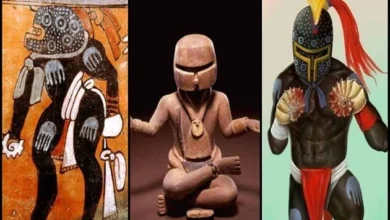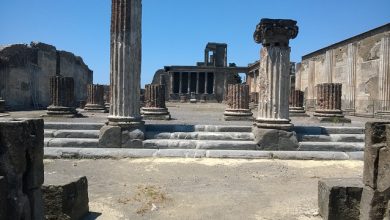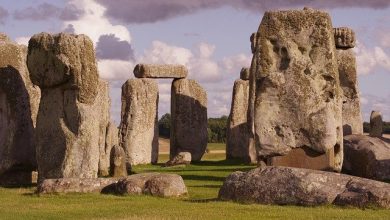5 mysteries of the Aztec civilization
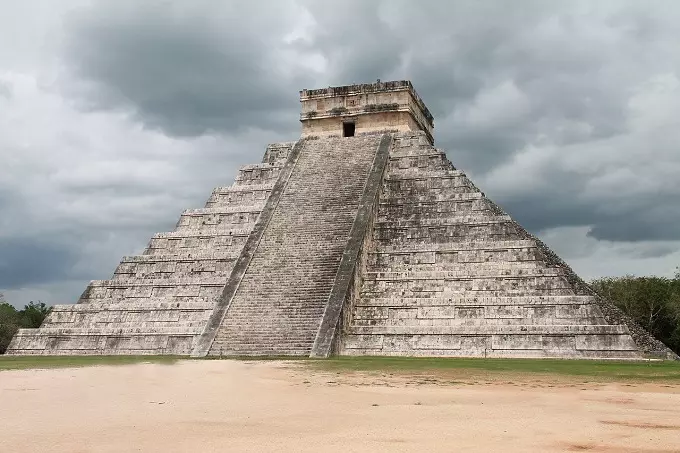
On December 17, 1790, the Aztec Sun Stone, one of the oldest monuments of Aztec culture of the late 15th century, was found.
The monument is 3.60 meters in diameter and 1.22 meters thick and weighs 24 tons. Until now, there is no consensus about its purpose. We decided to tell you about the five secrets of the Aztecs, a civilization with a rich mythology and cultural heritage.
1. The Sun Stone
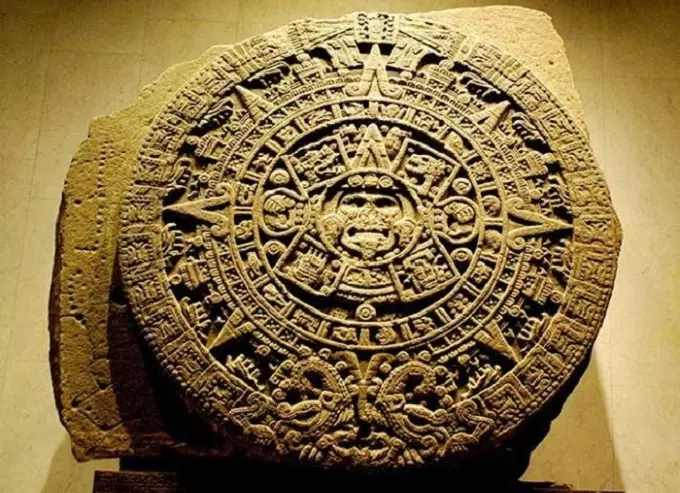
The Sun Stone is also called the Aztec calendar, although this name, according to many researchers, is erroneous. This basalt monolith was found on December 17, 1790, in the central Zocalo square in Mexico City, when the Spanish Viceroy ordered to pave the streets of the city and build a system of sewers. It is believed that the disk symbolically depicts Aztec ideas about the origin of the universe and the concept of time. According to the views of the Aztecs, humanity has experienced four suns (eras).
We are currently living in the fifth era, which the gods created in 986. It will be the last and will be destroyed by an earthquake. The God Tonatiu is the supreme Sun of our era, he should regularly make human sacrifices in order to preserve the continuity of the movement of the Sun and prevent the destruction of the world. The deity is depicted on the central disk with a tongue in the form of a silicon knife.
In each hand, he holds a human heart. Tonatiu is surrounded by four squares — symbols of the four dead eras. The first era perished because of jaguars that emerged from the ground; the Sun of the second era was destroyed by a hurricane; the third died under a fiery downpour, and the fourth was flooded by rain, and all people turned into fish. Some researchers tend to see the death of the fourth era as an analogy with the Flood. The signs of the cardinal directions are depicted between the eras, and the pictograms of the twenty days of the sacred Aztec calendar are located counterclockwise around the circumference that goes around the deity.
In the second ring, there are squares with five dots that symbolize the days of the week, and in the outer one, there are two snakes, one of which has a half-black face, and the other has a red one. It is believed that snakes symbolize the eternal change of day and night. There are versions that the stone could have been used as an altar; perhaps sacrifices were made on it, or gifts were laid to deities. It is currently on display at the National Museum of Anthropology of Mexico.
2. Teotihuacan City
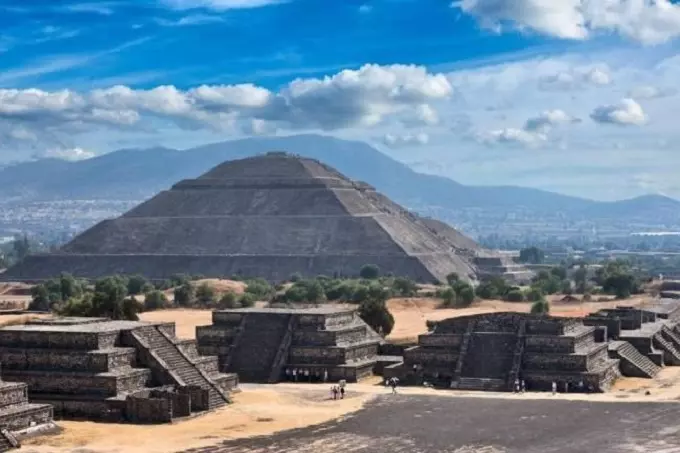
The abandoned city inherited by the Aztecs, called by them “the place where people become gods”, is located 50 kilometers northeast of Mexico City. It is one of the most valuable archaeological sites in the world. The grandiose structure had no equal in all ancient Latin America, it is the oldest city in the western hemisphere, but its exact age is unknown. It is believed that about 200 thousand people lived in it, which is comparable in size to the population of Rome at that time. However, in 700 BC, people suddenly left the city. According to another version, people did not live in it at all.
But the main mystery of Teotihuacan is the pyramids facing one side of the world. And they are built in accordance with the location of the planets in the Solar system. The largest of them is the pyramid of the Sun. It is believed that it was erected at the same time as the Roman Colosseum. A little smaller is the pyramid of the Moon, in the depths of which archaeologists found the remains of 12 human bodies. All had their hands tied behind their backs, but 10 of them were beheaded and thrown in a mess in the middle of the cell, and the other two were neatly planted.
The distance between the pyramids corresponds to the distance between real planets only on a scale of 1:100 million. In 2008, Mexican archaeologists began exploring a cave found under the pyramid of the Sun in the 1970s but closed by the decision of the authorities until recently. Scientists hope to find in it the key to unraveling the secrets of this mysterious city.
3. Ancient bas-reliefs
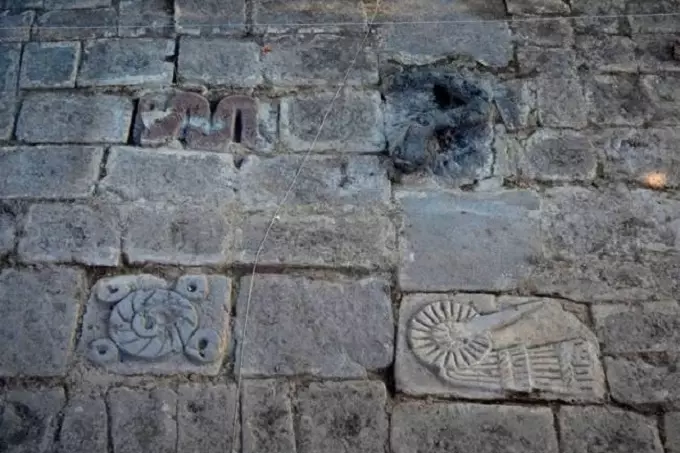
Recently, archaeologists, during excavations near the temple of Templo Mayor in the center of Mexico City, found several stone slabs depicting a calendar, as well as scenes from Aztec myths. For example, one plate depicted the scene of the birth of the god of war, Huitzilopochtli, while others depicted the story of the appearance of the sun god and his battle with the goddess of the Moon. Some of the tablets, in addition to mythical scenes, depicted various figures, for example, a warrior with a shield or with a device for throwing darts, and a man with his hands and feet tied.
The age of the find is 500 years. According to the director of the excavations, Mexican archaeologist Raul Barrera, these images are a form of writing. They tell of wars, captives, and bloody Aztec sacrifices. Archaeologists hope that the found bas-reliefs will help to unravel the secret symbols and understand the meaning of the little-studied rituals of the Aztec civilization.
4. Obsidian Processing
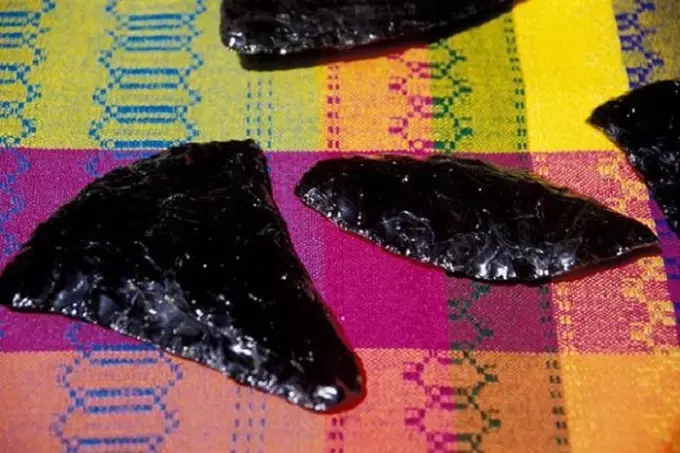
The Aztecs reached great heights in the processing of obsidian — it was necessary primarily for the production of weapons because the Aztecs did not know how to process iron. It was used to make knives, arrowheads, as well as blades for macuahuitl – swords with a wooden handle. Some historians believe that without these weapons of pre-colonial Central America, the Aztecs would never have built their powerful empire.
The chronicle “The True Story of the Conquest of New Spain” mentions the fact that in a one-on-one battle, the Aztec with such a wooden-obsidian sword was practically not inferior to the Spanish conquistador with steel weapons.
In addition, thanks to obsidian, Aztec surgeons could perform quite complex operations: instruments made of this material were not only sharp but also had antiseptic properties. It remains unclear how Aztec craftsmen could process obsidian with stone tools: this secret is lost. Now such things can be made only with the help of diamond cutters.
5. Mysterious burial

Not so long ago, during excavations conducted in the area of the same Templo Mayor, almost 2 thousand human bones were found. They were all in the grave of a single woman. Her skeleton has lain untouched for 500 years. Why she was buried this way, surrounded by other people, and who she was during her lifetime, scientists have yet to find out.
Scientists note that the burial, which dates back to about 1481-1486 years, is extremely atypical for the Aztecs and raises many questions. The skulls of seven adults and three children were found among the individual bones. At the same time, specific traces were found on some bones, which indicate that the victims’ hearts were extracted during the ritual.

